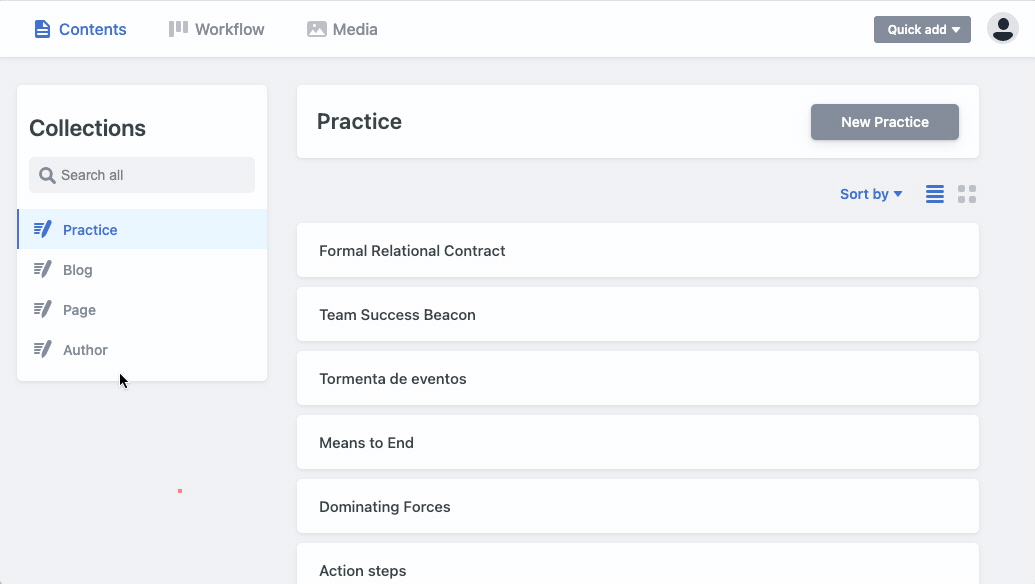8 ways anyone can contribute to the Open Practice Library
Contributing to the Open Practice Library is a fun way to participate in a global community of practitioners who are all willing to share their knowledge and improve their own ways of working.
Donna Benjamin
The Open Practice Library is a community-driven collection of practices for teams to use in support of working together. A "practice" is a behaviour or "trick" that teams use to improve how they achieve their goals. Sometimes those goals are technical, like programming and IT, but all teams can use help defining their practices. Whether you're a teacher, event planner, salesperson, or artist, the process is important. When you're a team, getting on the same page is vital, and that's what the Open Practice Library can help you do.
The Library draws on the experience of practitioners from a wide range of backgrounds. Some of the practices in the Library may feel familiar if you're an agile practitioner or UX researcher. As a sysadmin, site reliability engineer, or software developer, you may also recognize a few practices from your own toolkit.
To support cross-functional teams building their collaboration skills together, the Open Practice Library is open to all to use, study, share, and even contribute, regardless of their role or job function. Many people who use the Library are surprised to learn they can contribute to it! So, below I'll take a look at seven different ways you can contribute to the Open Practice Library and then explore three reasons why you might want to have a go.
1. Interact with us on LinkedIn.
We share our practices on LinkedIn, and LOVE hearing how you're using them out there in the wild. Share your experience using the practice. Did it work for you? Would you change anything? Any tips for others using the practice?
2. Spread the word.
Please help grow the Open Practice Library community by telling other people about it and inviting them to contribute too. Follow us on LinkedIn and check out the podcast.
3. Add your favourite practice.
Are you a practitioner with a tried and true method that the Library hasn't yet covered? It'd be great to share that with the world. Note that the content gets licensed under a creative commons license to make sure it's open for all to use and share with others. Review the Library's Editorial Style Guide to learn more about how to write about a practice for the Library.
Ok, ready?
Select Add a Practice from the menu.

(Donna Benjamin, CC BY-SA 4.0)
That takes you to the login page of the content management system (CMS). The Library uses the open source Netlify CMS for moderating contributions.
Select Login with Netlify Identity.

(Donna Benjamin, CC BY-SA 4.0)
Then click Continue with GitHub account.

(Donna Benjamin, CC BY-SA 4.0)
Next, log in with your GitHub details, or create an account (it's free).

(Donna Benjamin, CC BY-SA 4.0)
Once logged in, select New Practice, which takes you to the form to add a practice to the collection.

(Donna Benjamin, CC BY-SA 4.0)
Once you've drafted the new practice, you also need to add your name and GitHub username to the CMS for display on the Practice page. Select Author from the Quick add menu, or choose Author from the Collections menu, and then select New Author.

(Donna Benjamin, CC BY-SA 4.0)
4. Add a helpful resource or link.
Click the Improve this Practice button and find the links we love section. Post the URL, add a description, and select the category (for example, Video, blog).

You can search for the practice you want to improve, for example, "Affinity Mapping."

Then click on the practice name to open the edit page.
5. See a typo?
Click the Improve this Practice button and go right ahead and fix it!
6. Add an issue on GitHub.
See something that's not quite right? Have a suggestion for a feature? Let the community know.
How: Go to the issues page and log into GitHub to add a new issue.
7. Help with the website code.
There's a backlog of issues in GitHub that list where help on the website is needed. If you want to roll up your sleeves and help with fixing bugs or developing new features—you can even contribute code.
8. Contribute treasure.
We have some small expenses, you can contribute cash to our Open Collective fund
Wrap up
Why contribute? Here are four reasons for you to consider:
- "While we teach, we learn" is an old Roman saying.
You deepen your own understanding of a practice you use by writing it down and sharing it with others. Do some research on the background of where the practice came from, help credit the original source, and find examples of its usage. - Improve your writing skills
By following the editorial style guide, you are learning to adapt your natural writing style to fit specific criteria. This is a valuable and fundamental communication skill that you can apply in a range of contexts. - Demonstrate leadership
By sharing your knowledge and expertise with an open, global community, you can help others grow and learn from your depth of experience. - Contribute to the commons
Open Source Software, and Open Knowledge projects like wikipedia are incredible sources of value for humanity. Contributing to the Open Practice Library is another small way to add to the digital commons.
Contributing to the Open Practice Library is a fun and easy way to participate in a global, open community of practitioners who are all willing to share their knowledge and trying to improve their own ways of working.
Adapted from the original published on OpenSource.com under a CC-BY-SA licence.